Top 5 OCD Books To Read In 2024
Medically Reviewed By – Juliet Gustafson, LMSW

This post may contain affiliate links, which means I’ll receive a commission if you purchase through my link, at no extra cost to you.
In the age of information, it is imperative to take advantage of modern technologies. Thus, we set out to research, read and anaylze the top 5 OCD related books on the market today. These tools are very helpful in providing insight on OCD from respected doctors and scholars in the industry. The below list of books have been read by millions of people around the world and are considered “must read” if you have any interest on OCD (you or a loved one suffer from it)
This post is all about the top 5 OCD Books To Read In 2024.
Brain Lock, Twentieth Anniversary Edition: Free Yourself from Obsessive-Compulsive Behavior
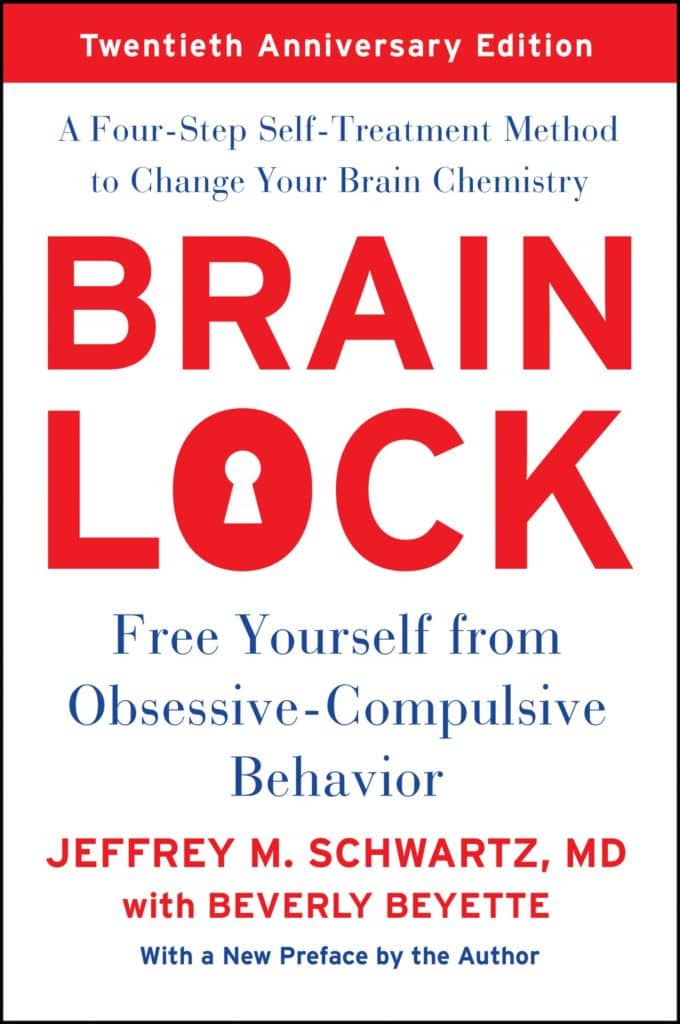
Jeffrey M. Schwartz, M.D., explains in Brain Lock a simple four-step strategy for treating OCD that is so powerful that it is now employed in academic treatment centers worldwide.
This strategy does not rely on psycho pharmacology and has been shown by brain-imaging tests to truly change the chemistry of the brain. Instead, to create alternative patterns of reaction to their obsessions, patients employ cognitive self-therapy and behavior modification. They basically use the mind to fix the brain. Using real-life experiences from genuine patients, Brain Lock explains this breakthrough strategy and gives readers the inspiration and resources they need to break free from their psychic prisons and reclaim control of their lives.
Why We Like It
One of the greatest books on OCD, Dr Schwartz went to great lengths to simplify OCD and preach his wonderful 4 step process of overcoming OCD symptoms. We now have empirical proof that cognitive-behavioral therapy alone truly creates chemical changes in the brains of patients with OCD, which has never been the case for any psychiatric disorder or psychotherapy method.
You may break free from Brain Lock, alter your brain’s chemistry, and find relief from the debilitating symptoms of OCD by altering your behavior. Increased self-control and self-command lead to higher self-esteem as a result of this process.
The effect that an obsessional idea or drive has on a trained mind versus what it has on an untrained mind differs significantly. You will not only have a formidable weapon in your struggle against your undesired ideas and cravings if you understand the Four Steps, but you will also empower yourself in a much larger sense.
By doing this, you will boost your capacity to reach your objectives and raise the standard of your daily life. Your mental capacity will increase, becoming more powerful, steady, insightful, and peaceful. Almost every disruptive thought or behavior that you resolve to stop can be controlled with the Four Steps.
Overcoming Unwanted Intrusive Thoughts: A CBT-Based Guide to Getting Over Frightening, Obsessive, or Disturbing Thoughts
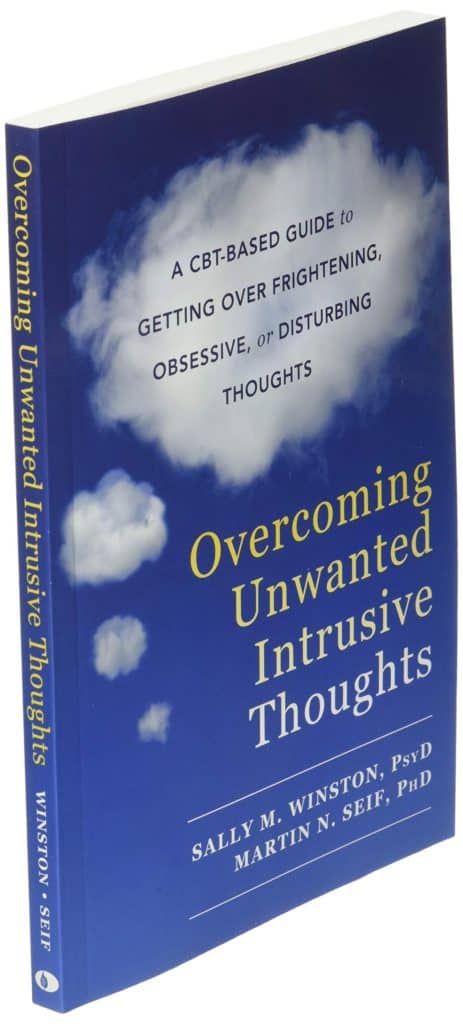
You’ll learn about the various types of worrisome thoughts, the myths associated with them, and how your brain is prone to become “stuck” in a loop of unwelcome rumination in this kind of sympathetic guidance.
You’ll also discover why popular methods for getting rid of unwanted thoughts often backfire. Finally, you’ll learn powerful cognitive behavioral methods to help you manage with and go beyond your thoughts so you can focus on living the life you want. Thoughts will still come to you, but you’ll be better able to deal with them—without fear, embarrassment, or shame.
Keep in mind that you are not alone if you are experiencing unwelcome ideas. In actuality, there are literally millions of individuals exactly like you—good people who have terrible thoughts, kind people who have violent impulses, and rational people who have “crazy” thoughts. Overcoming Unwanted Intrusive Thoughts Is a book that will teach you how to get over your thoughts and reclaim your life!
Why We Like It
Dr. Winston’s work, in my opinion, offers insightful information on a variety of subjects, including how intrusive thoughts are a common occurrence for everyone, how self-talk used improperly can occasionally result in compulsions, the significance of observing and letting go of thoughts. moreover, how thinking about a thought may make it more likely to be highlighted and thus more difficult to let go.
A common theme Dr Winston emphasized is that Obsessive thoughts are nothing more than thoughts in our heads. Winston did a great job of explaining how the amount of effort and focus you put into an obsessive thought increases your chances of ruminating about it. Furthermore, she also noted how beliefs impact each fixated thought, and how they are most frequently motivated by desires to push or move away from the feared outcome, which can cause stress.
Rewire Your OCD Brain: Powerful Neuroscience-Based Skills to Break Free from Obsessive Thoughts and Fears
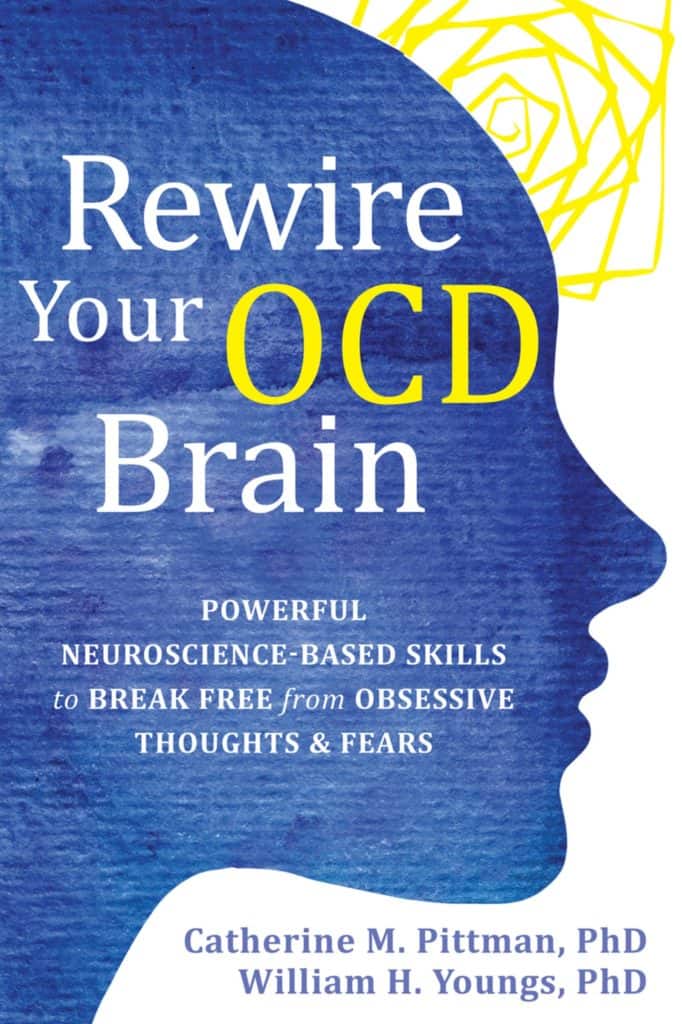
If you’ve ever questioned why you appear to get locked in an endless cycle of obsessive, compulsive thinking, you don’t have to anymore. Rewire Your OCD Brain will show you how and why your brain gets stuck in a loop of obsessive thinking, uncertainty, and worry.
Rewire Your OCD Brain will show you how and why your brain gets stuck in a loop of obsessive thinking, uncertainty, and worry.
This innovative book, written by clinical psychologist Catherine Pittman and clinical neuropsychologist William Youngs, will illustrate how neurological activities in the brain contribute to obsessions, compulsions, and anxiety. You’ll also find a plethora of tried-and-true coping tactics to assist you deal with your worst symptoms, including as relaxation, exercise, good sleep habits, cognitive restructuring, thought defusion, distraction, and mindfulness.
Why We Like It
Catherine M. Pittman and William H. Youngs’ book Rewire Your OCD Brain discusses how your brain works and how you can use it to treat OCD.
The cortex and amygdala, the two major brain regions associated with OCD, are the main topics of the book. Each individual’s function is described, along with how they interact and how symptoms are influenced. The key themes that are continually highlighted are that ideas are simply thoughts, but the amygdala assumes they represent truth and causes a cautionary response, which is perceived as a warning that there is imminent risk.
Dr Catherine Pittman explained in details that individuals with OCD tend to underestimate how frequently people experience intrusive thoughts, despite the fact that this occurs frequently. A significant difference is that individuals with OCD tend to become fused to their thoughts, believing them to be the only true reality. The left hemisphere of the brain, which utilizes language, or the right hemisphere of the brain, which uses images and other sensory information, may be the source of these intrusive ideas. Either way, intrusive thoughts are experienced by all people, not just OCD patients.
being aware of the critical causes makes it much apparent why OCD behaves the way it does. Regardless of the fact that it is incredibly neurological, Dr Pittman employed straightforward and uncomplicated terminology. Anyone looking to learn more about the specifics of OCD would do well to read this book, in my opinion.
The Mindfulness Workbook for OCD: A Guide to Overcoming Obsessions and Compulsions Using Mindfulness and Cognitive Behavioral Therapy
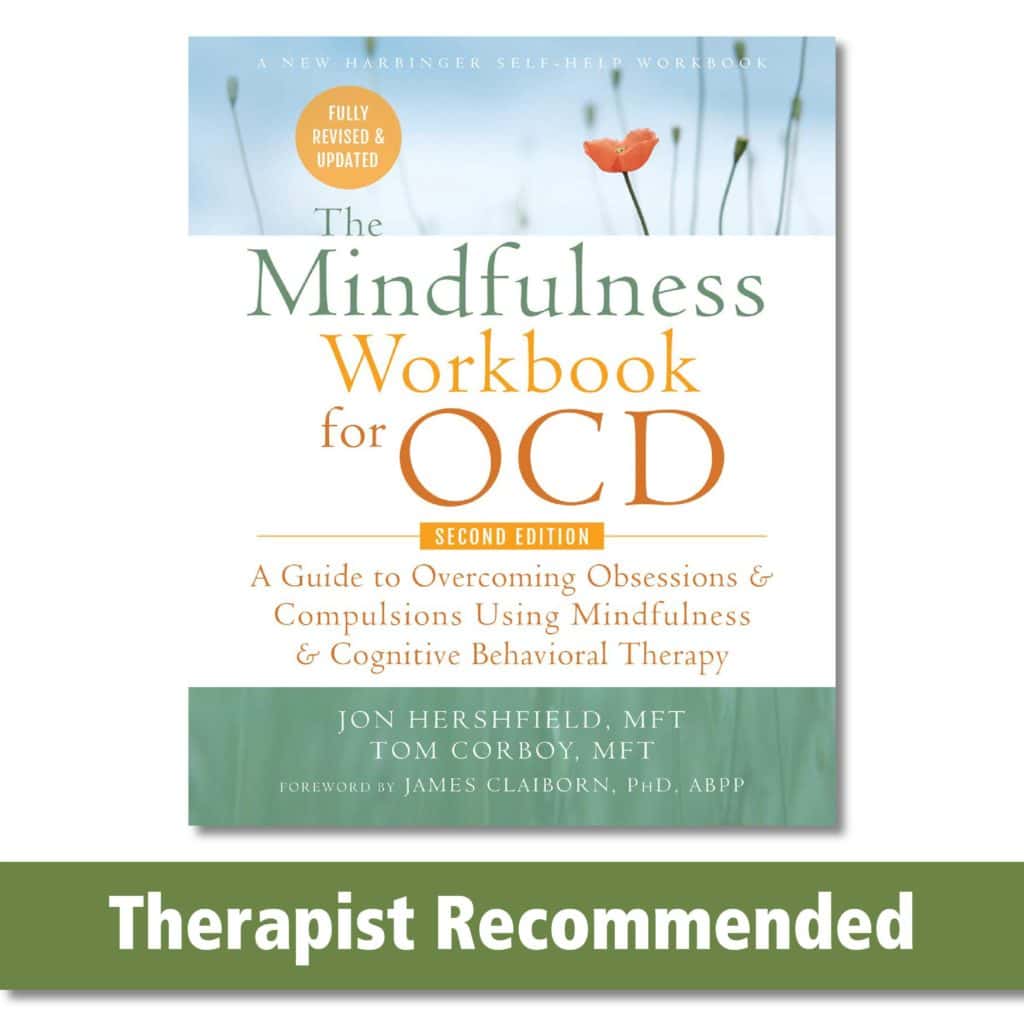
The Mindfulness Workbook for OCD provides realistic and approachable strategies for controlling the undesirable thoughts and compulsive behaviors that are connected to OCD by fusing mindfulness techniques with cognitive-behavioral therapy (CBT).
By using this workbook, you can learn to confront your own flawed thinking, become more aware of the moment, and stop viewing ideas and emotions as true or false.
New meditations, information, and chapters on emotional and mental contamination, existential obsessions, false memories, and other topics are now included in this thoroughly edited and updated second version.
Why We Like It
For those with OCD, the Mindfulness OCD Workbook is a very useful and approachable resource for developing their skills. Since Sarah Fader and Robin Kirk are living examples of the very qualities they are trying to teach, the book is written in a very accepting and nonjudgmental manner with the reader in mind.
Following a review of OCD and the key evidence-based treatment approaches from which the authors draw tactics and procedures, the following chapters present seven aspects of mindfulness in a simple, well-organized manner.
Each chapter contains a recommended skill-building challenge, a brief case scenario, several meditative, experiential, and/or written activities for readers to do on their own, and supportive words/affirmations.
Stop Obsessing!: How to Overcome Your Obsessions and Compulsions
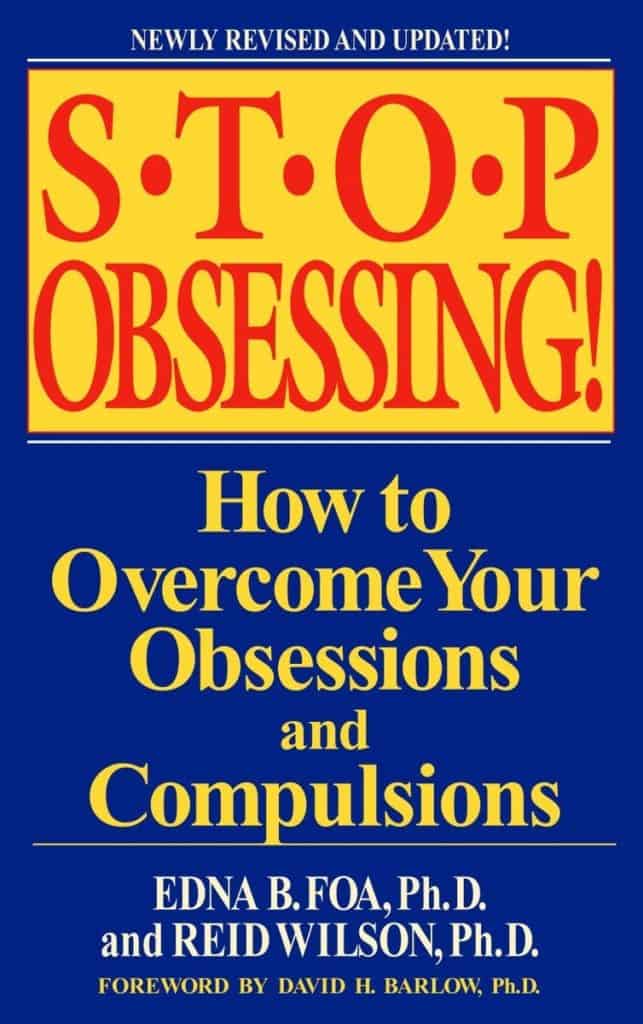
OCD, once thought to be almost intractable, is now understood to be a highly curable illness with behavior treatment. Stop Obsessing! has been completely edited and updated.
Drs. Foa and Wilson, world-renowned experts in the treatment of anxiety disorders, provide their scientifically supported and clinically tested self-help approach, which has already freed hundreds of OCD sufferers from excessive worry and rituals.You will learn:
• Programs with step-by-step instructions for both mild and severe OCD. • The most effective methods for overcoming obsessions and gaining control over compulsions
• New charts and fill-in guidelines to help measure progress and simplify exercises
Why We Like It
The Book is divided into three parts starting from getting to know OCD, techniques to deal with it and lastly a self help course which was really amazing to see included.
Part 1 of the book is devoted to getting a fundamental grasp of OCD—what it is and is not, who can benefit the most from the program, and who should seek the help of a mental health professional rather than going on this difficult road alone.
Part 2 focuses on cognitive and behavioral strategies that the authors have found to be effective in reducing the power of obsessions and compulsions in worriers and individuals with less severe symptoms.
For those who spend more than two hours per day ritualizing, Part 3 offers an intense, three-week cognitive-behavioral self-help course. This superb volume may be best utilized as a supplement to professional treatment or as an instructional tool.
Conclusion
All in all, the list above is an excellent first step in understanding OCD, how it functions and ways to deal/ cope with the disease. They are written by certified professionals and scholars with you the reader in mind. Have you read any of them? If so, which one do you recommend the most?
This post was all about the top 5 best OCD books to read in 2024





